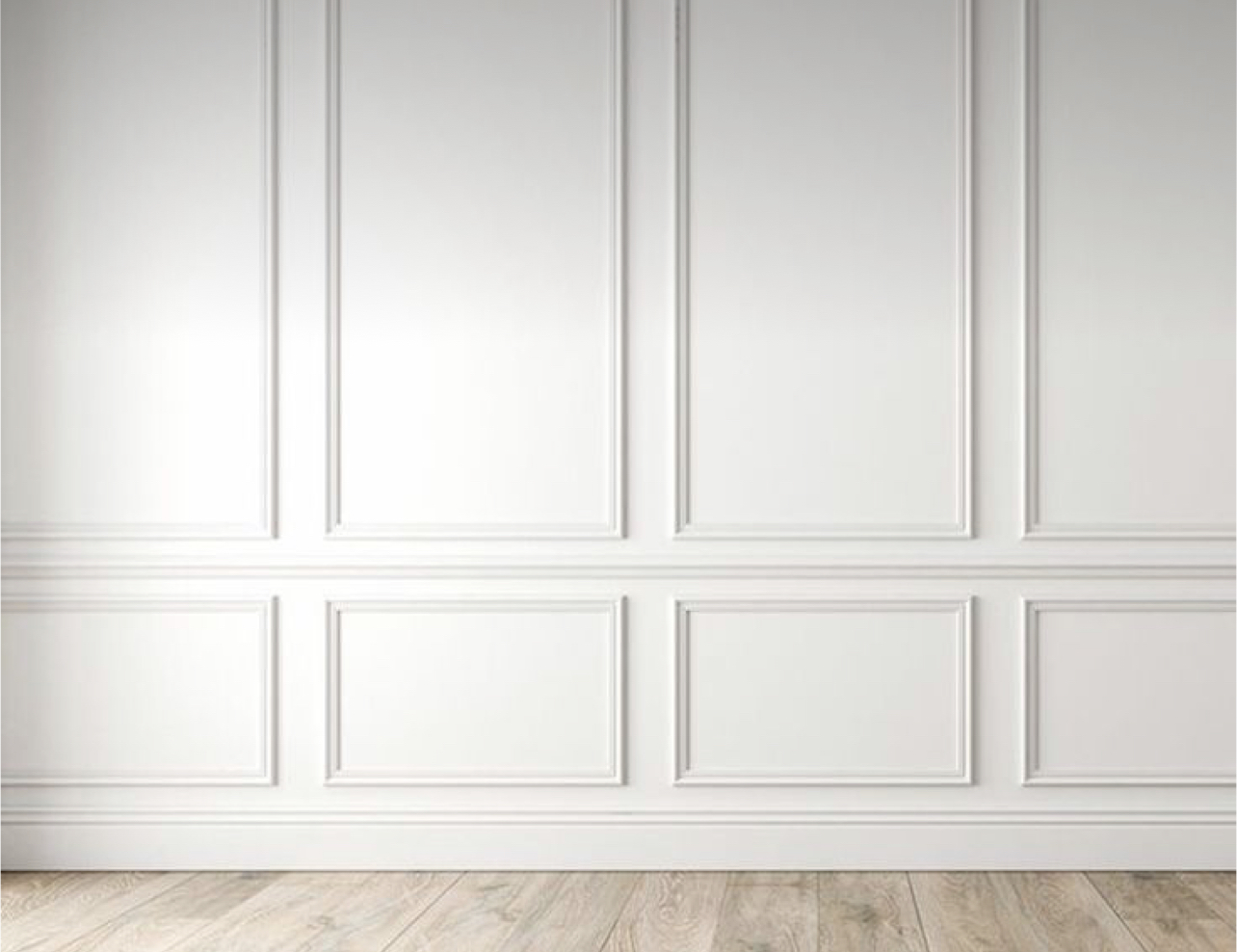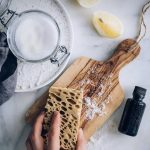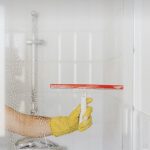How to clean your walls – Spot Cleaning VS Wall Washing

The best method to use when washing your walls.
When it comes to maintaining the cleanliness and appearance of our homes, walls often take a back seat to more prominent cleaning tasks like floors, countertops, and appliances. However, neglecting your walls can lead to a dingy and unkempt living space over time. To ensure your walls remain pristine and inviting, it’s crucial to understand the best ways to clean them effectively.
In this comprehensive guide, we will delve into the art of wall cleaning, exploring the differences between spot cleaning and washing, and providing you with expert tips and techniques to keep your walls looking their best. Whether you’re dealing with unsightly stains or simply want to refresh your living space, this guide has got you covered.
Understanding Your Wall’s Surface
Before we dive into the specifics of cleaning, it’s essential to understand the various types of wall surfaces and how they can influence your cleaning approach.
1: Painted Walls
Most interior walls are painted, and the type of paint used can vary. Common types include latex, oil-based, and enamel paints. The paint finish can also differ, with options like matte, eggshell, satin, and glossy. The type of paint and finish will impact your cleaning method, as some are more sensitive to moisture and chemicals than others.
2: Wallpapered Walls
Wallpaper is another common wall covering, and it comes in various materials, patterns, and textures. Cleaning wallpaper requires a gentler approach compared to painted walls, as excessive moisture or abrasion can damage it.
3: Drywall
Drywall, also known as plasterboard or gypsum board, is a common wall material. It is typically covered with paint or wallpaper. While it’s durable, it’s essential to avoid excessive moisture that can cause damage or promote mould growth.
Spot Cleaning
Spot cleaning involves addressing specific stains or marks on your walls without cleaning the entire surface. It’s a more targeted approach suitable for minor blemishes and touch-ups.
Gather Your Supplies
Before you begin spot cleaning, assemble your cleaning supplies, you will need:
- Clean, white cloths or micro fibre towels
- Mild dish soap or a specialised wall cleaner
- Warm water
- A bucket
- Soft-bristle brush or sponge
- Painter’s tape (for protecting adjacent surfaces)
- Latex gloves (optional)
Identify the Stain
Examine the stain closely to determine its nature. Common wall stains include:
- Food and beverage stains
- Ink or pen marks
- Scuff marks
- Fingerprints
- Water spots
- Grease or oil stains
Pretest in an Inconspicuous Area
Before applying any cleaning solution to the stained area, perform a pretest in a hidden or inconspicuous spot on your wall to ensure it won’t cause damage or discoloration.
Cleaning Steps
Follow these steps for effective spot cleaning:
a) Protect surrounding areas: Use painter’s tape to cover nearby surfaces, switches, and outlets.
b) Mix your cleaning solution: Combine a small amount of mild dish soap with warm water in a bucket. Avoid using abrasive or harsh chemicals on your walls.
c) Dampen a cloth or sponge: Dip a clean cloth or sponge into the soapy water mixture and wring it out thoroughly. The cloth should be damp but not dripping.
d) Gently blot or rub: Apply the damp cloth or sponge to the stained area and blot or rub gently. Avoid excessive pressure, as this can damage the wall’s surface.
e) Rinse and dry: After removing the stain, rinse the area with a clean, damp cloth to remove any soap residue. Finally, pat the area dry with a clean, dry cloth.
Dealing with Stubborn Stains
Some stains may require extra attention. Here are specific tips for common stubborn stains:
- Ink or pen marks: Try using rubbing alcohol or acetone on a cotton ball or cloth. Test in an inconspicuous area first.
- Grease or oil stains: Sprinkle baking soda on the stain, let it sit for a few minutes, then blot with a damp cloth.
- Crayon marks: Use a white eraser to gently remove crayon marks. Be cautious not to rub too hard and damage the paint.
Wall Washing
Wall washing involves cleaning entire wall surfaces, making it suitable for more extensive cleaning needs or routine maintenance.
Prepare Your Space
Before you begin wall washing, prepare your space:
- Remove wall decor, furniture, and obstacles.
- Cover electrical outlets and switches with plastic covers to prevent moisture damage.
- Vacuum or dust the walls to remove loose dirt and cobwebs.
Gather Your Supplies
For wall washing, you’ll need:
- Mild detergent or wall cleaner
- Warm water
- A bucket
- Soft-bristle brush or mop with a micro fibre cover
- Extension pole for high walls
- Clean, white cloths or sponges
- Latex gloves
- Drop cloths or plastic sheets to protect the floor
Cleaning Steps
Follow these steps for effective wall washing:
a) Mix your cleaning solution: Fill a bucket with warm water and add a small amount of mild detergent or a specialised wall cleaner. Mix well.
b) Start from the top: Begin cleaning from the top of the wall and work your way down. This prevents dirty water from running down and causing streaks.
c) Use an extension pole: For high walls or hard-to-reach areas, attach a soft-bristle brush or mop to an extension pole to avoid using a ladder.
d) Dip and wring: Dip your brush or mop into the soapy water mixture, then wring it out thoroughly. It should be damp but not dripping.
e) Scrub gently: Gently scrub the wall surface using a circular or horizontal motion. Pay extra attention to areas with stains or visible dirt.
f) Rinse and dry: After washing a section, rinse your brush or mop in clean water and wring it out. Use a clean, damp cloth or sponge to wipe the area you just washed, removing any soap residue. Finally, pat the area dry with a clean, dry cloth.
Dealing with Stubborn Stains
For stubborn stains on your walls that can’t be removed with standard wall washing, you may need to consider repainting or wallpapering the affected area.
Maintaining clean and pristine walls is a vital aspect of keeping your home looking its best. Whether you’re dealing with minor stains or planning a thorough wall cleaning session, understanding the differences between spot cleaning and washing is key to achieving the desired results.
By following the guidelines and tips provided in this comprehensive guide, you can keep your walls looking fresh and inviting for years to come. Remember to always test cleaning solutions in inconspicuous areas and use gentle methods to avoid damaging your wall surfaces. With the right approach and a little elbow grease, your walls will continue to be a source of pride and beauty in your home.
Do you live in Brisbane and really want cleaner walls? Before investing your time in cleaning try our Spring Cleaning Service. Our Spring Cleaners can even help out by decluttering and organising your home to prep it for more Regular Cleaning Services.
If the thought is too much to bear call our Nest Cleaners and we would love to help!
BOOK NOW: Call 0438 079 996 OR Online Estimate with Nest Cleaning in Brisbane, Australia








